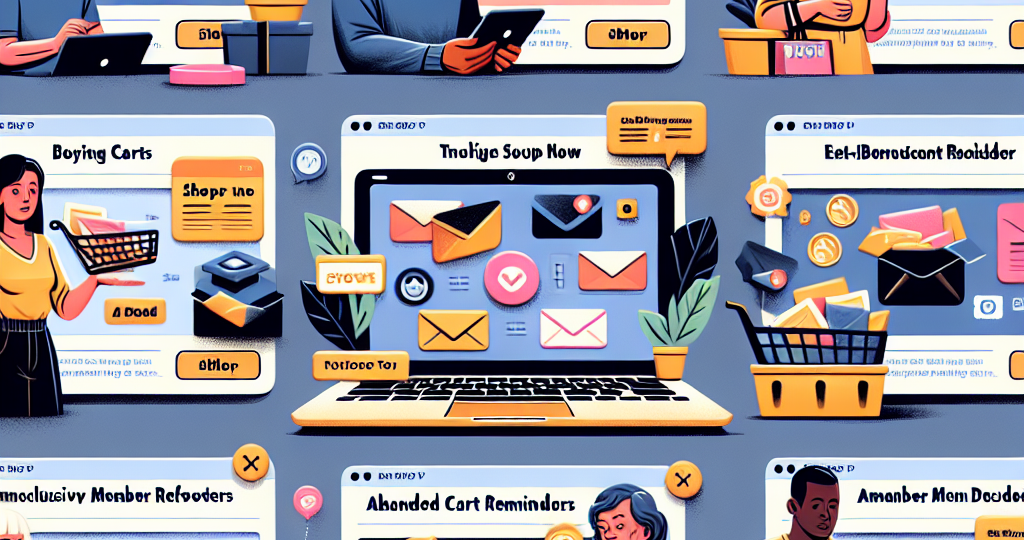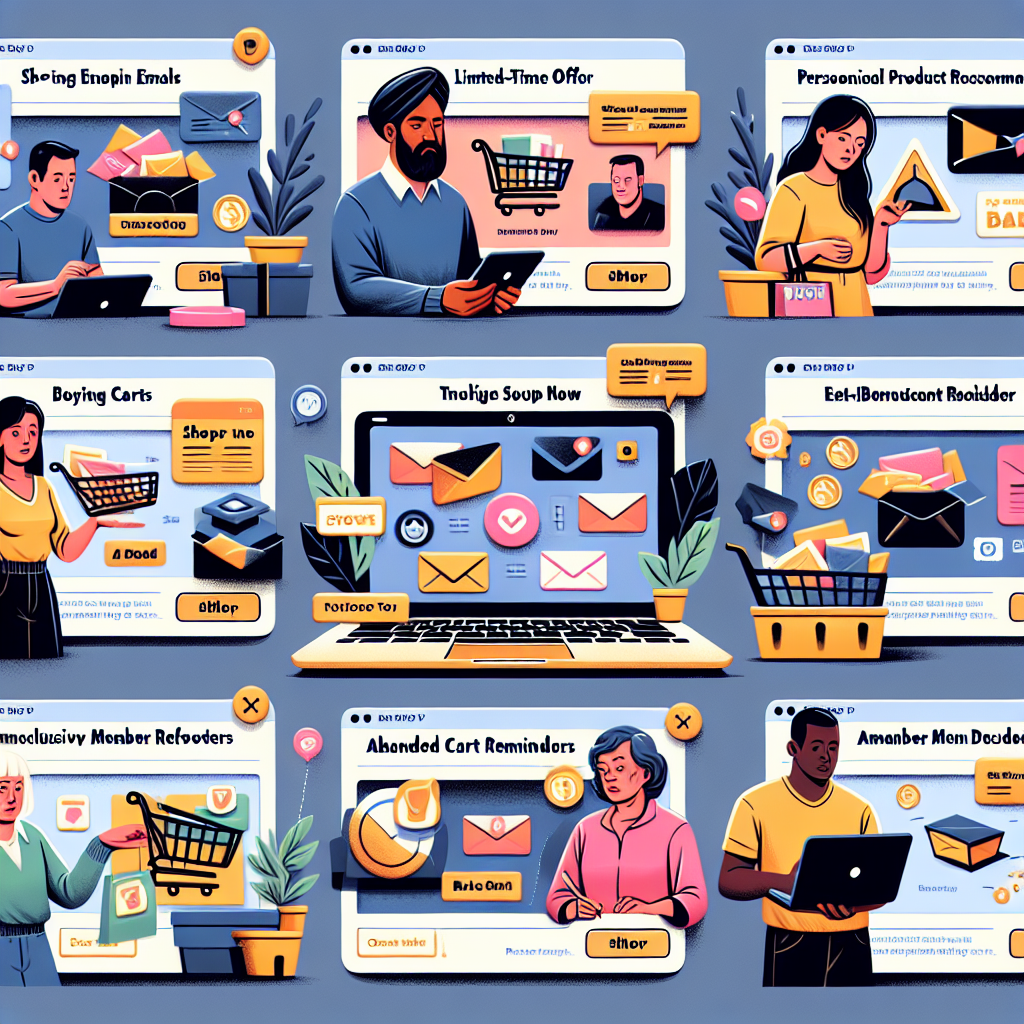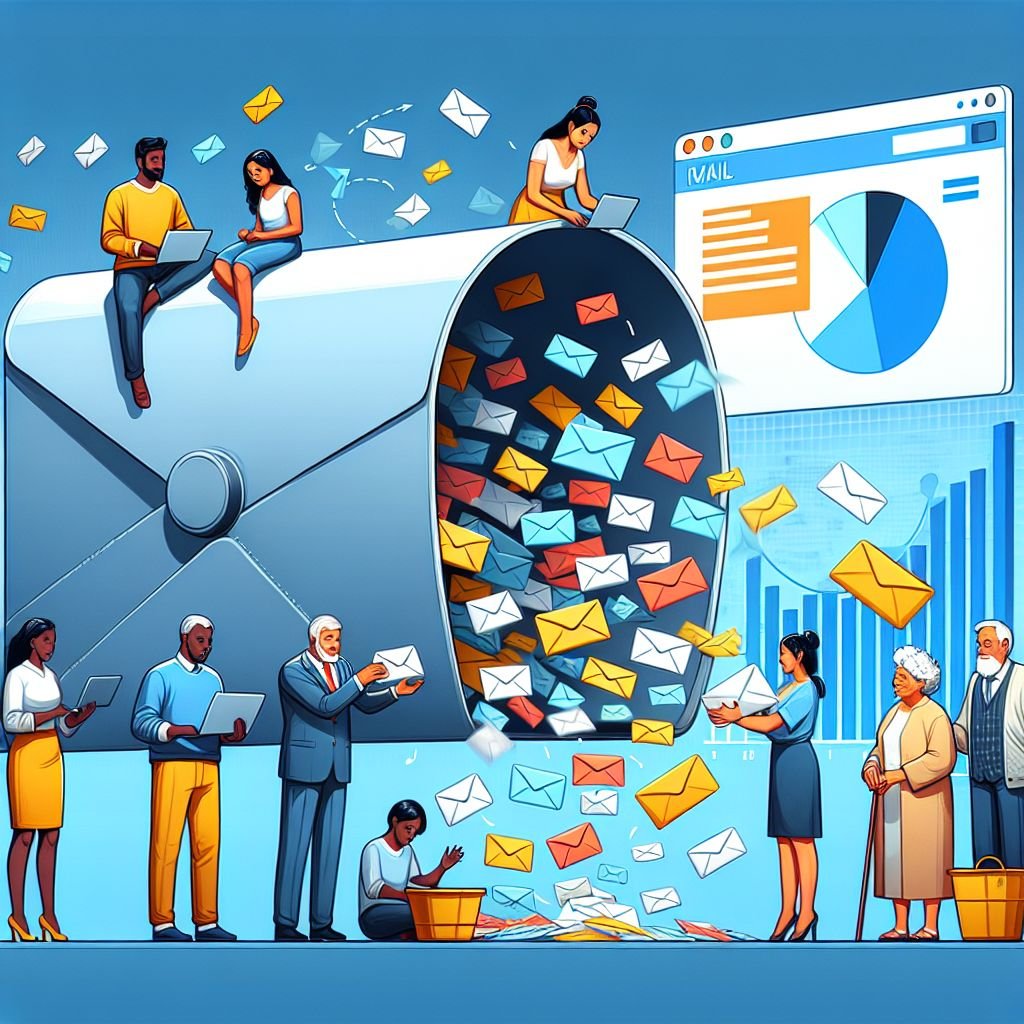

Imagine a world where every email you send to your customers feels like a special note, tailored just for them, arriving at the perfect moment. That’s the power of email copy purchase triggers. These triggers are like secret agents working behind the scenes to boost engagement and drive sales. And the best part? You can set them up once and watch them work their magic over and over again.
Key Takeaways
- Trigger emails can increase revenue by providing timely and relevant engagement with customers.
- Personalization is key to making your customers feel special and understood.
- Creating a sense of urgency with limited-time offers can boost immediate sales.
- Behavior-driven triggers, such as abandoned cart reminders, keep customers on the path to purchase.
- Clear and compelling calls-to-action in your emails can significantly improve click-through rates.
Unlocking the Secrets of High-Converting Email Triggers
Email triggers are not just about sending emails; they’re about sending the right email at the right time. It’s like catching someone right before they’re about to leave a store and reminding them of something they loved but forgot to buy. Let’s dive into the mechanics of these powerful tools.
Power of a Well-Crafted Trigger
Imagine someone browsing your online store, adding items to their cart, and then… they leave. Poof, just like that. But what if you could reach out and remind them of what they’re missing? That’s where a well-crafted abandoned cart email comes in. It nudges the customer, saying, “Hey, you forgot something!” And more often than not, they’ll come back to complete the purchase.
Immediate Impact on Sales
Trigger emails are not just about being friendly; they’re about being strategic. By reaching out at the right time, you’re much more likely to convert a browser into a buyer. And that’s not just guesswork; studies show that trigger emails have an open rate that is 70.5% higher than standard emails. Now, that’s what I call an immediate impact!
Personalization: The Heart of Engagement
Do you know what makes people feel valued? When you remember their name, their preferences, and their history with your brand. That’s the essence of personalization in email triggers.
Using Customer Data for Tailored Messages
It’s like this: You’ve got a friend who loves science fiction novels. So, when you find a book you think they’d like, you don’t just throw it on a pile of random recommendations; you hand it to them and say, “I thought of you when I saw this.” That’s what personalized emails do. They use data like past purchases and browsing behavior to make spot-on recommendations.
Segmenting Your Email List
Now, how do you make sure your emails are hitting the mark? You segment your email list. Think of it like organizing a party. You don’t mix the quiet board game enthusiasts with the loud dance party crowd. You create different spaces for different tastes. Segmenting your email list works the same way. It ensures that the message resonates with each unique group of customers.
Creating Urgency: Limited-Time Offers
Let’s talk about urgency. You know that feeling when you hear about a sale that’s ending soon? That’s urgency making your heart race. And it’s a powerful tool in your email triggers.
Flash Sales Announcements
A flash sale is like a surprise party. It’s exciting because it’s unexpected and it doesn’t last long. Announce a flash sale in your email, and watch as customers rush to your site, worried they might miss out on a great deal.
“Don’t miss our 24-hour flash sale! Exclusive deals just for you – but hurry, the clock is ticking!”
Last-Minute Deal Alerts
And then there’s the last-minute deal alert. It’s the equivalent of someone whispering in your ear, “Pssst, the show is about to start, and we’ve got a few tickets left at half price!” Who wouldn’t want to jump on that opportunity?
“Final hours to save! Prices go back up at midnight – grab your favorites now!”
Behavior-Driven Triggers: Acting on Customer Actions
Behavior-driven triggers are about action and reaction. A customer does something, and your email responds accordingly. It’s like a dance, and when done right, it leads to a beautiful partnership.
Abandoned Cart Reminders
Abandoned cart emails are your friendly nudge, reminding customers of what they’ve left behind. It’s not pushy; it’s helpful. Think of it as the online equivalent of a salesperson who says, “I noticed you looking at this earlier, thought you might want another peek.”
Rewarding Customer Loyalty
Loyalty should be rewarded, and what better way to do that than with a special email? Send a thank you note with a discount or a sneak peek at new products. It’s a way of saying, “We see you, we appreciate you, and here’s something just for you.”
Value Proposition: Crafting Offers They Can’t Refuse
Value proposition is your ace in the hole. It’s what sets you apart from the competition and gives your customers a reason to hit that ‘Buy Now’ button. But crafting an offer they can’t refuse? That’s about understanding what your customers really want and then giving it to them on a silver platter.
Exclusive Discount Codes
Everyone loves feeling special, and exclusive discount codes do just that. They whisper in your customer’s ear, “This deal is just for you.” Use them to welcome new subscribers or to thank repeat customers. It’s a simple gesture that can lead to a significant boost in sales.
Free Gifts with Purchase
Free gifts with purchase work like a charm. It’s like going to a party and finding out there’s a goodie bag. You’re not just buying a product; you’re getting a present, and who doesn’t love presents? This kind of trigger can sweeten the deal and make your customers feel valued.
Tapping Into Emotions: The FOMO Effect
Now, let’s talk about emotions. More specifically, let’s talk about the fear of missing out, or FOMO. It’s that anxious feeling you get when you see everyone else having fun and you’re not there. FOMO is a powerful motivator, and you can use it to your advantage in your email triggers.
“Don’t Miss Out” Strategies
When you tell someone they’re about to miss out on something great, their natural reaction is to jump on the opportunity. Use phrases like “Last chance!” or “While supplies last!” to create a sense of urgency that’s hard to ignore.
“Don’t Miss Out: Our exclusive members-only sale ends tonight!”
Testimonials and Social Proof
Then there’s social proof. It’s the online version of seeing a crowd outside a restaurant and thinking, “That place must be good.” Testimonials and user reviews are social proof that tells your customers, “People just like you love this, so why not give it a try?”
Subject Lines That Snag Attention
The subject line is the gatekeeper of your email. It’s what decides whether your email gets opened or tossed into the digital bin. So, you’ve got to make it irresistible.
Curiosity-Inducing Phrases
Curiosity may have killed the cat, but it’ll breathe life into your open rates. Use phrases that tease without giving it all away, like “You won’t believe what’s inside!” or “We saved you a seat!” It’s about piquing interest to the point where clicking open feels like unwrapping a gift.
Personalized Subject Lines
And don’t forget personalization. Seeing your name in a subject line is like hearing someone call out to you in a crowd—it grabs your attention. Combine personalization with a curiosity-inducing phrase, and you’ve got a subject line that’s almost impossible to ignore.
“Hey [Name], your perfect [Product] is waiting!”
Call-To-Action: Clarity is King
Now, let’s get down to business. Your call-to-action (CTA) is what turns a reader into a customer. It’s the big, shiny button that says, “Do this now!” And clarity? That’s its best friend.
Prominent Button Placement
Make sure your CTA button is easy to find and impossible to ignore. Place it front and center, and make it big enough to see without squinting. A good CTA button stands out like a beacon, guiding your customers to the next step.
Clear and Compelling Copy
Your CTA copy should be straightforward and action-oriented. Use verbs that inspire action like “Shop,” “Discover,” or “Get.” And make sure it’s specific—you want your customers to know exactly what they’re getting when they click.
“Claim your free trial now and start enjoying all the premium features today!”
Tips for Testing and Optimization
Even the best email triggers can be made better with a little testing and optimization. It’s like baking a cake—you’ve got to try a few recipes before you find the perfect one.
A/B Testing Best Practices
A/B testing is your taste test. It lets you try out different versions of your email to see which one your customers prefer. Maybe it’s the subject line, the images used, or the placement of the CTA button. Whatever it is, A/B testing will help you find it.
Here are a few tips to get the most out of your A/B testing:
- Change one element at a time to know what’s making the difference.
- Test with a large enough group to get statistically significant results.
- Use the results to make informed decisions about future emails.
Analyzing Data for Continuous Improvement
What’s the secret sauce to a successful email trigger campaign? Continuous improvement through data analysis. This is like being a detective, searching for clues in your campaign’s performance to figure out what works and what doesn’t. Look at metrics like open rates, click-through rates, and conversion rates to understand your audience’s behavior. Then, use this insight to refine your approach, making each email more effective than the last.
Utilizing Mobile-Optimized Design
Did you know that most people check their emails on their phones? That’s why your emails need to look good on a tiny screen. A mobile-optimized design ensures that no matter where your customers are or what device they’re using, your emails will always be easy on the eyes and fingers. This means big, tappable buttons, readable fonts, and quick-loading images. It’s all about making the mobile experience so smooth that your customers can’t help but engage.
Responsive Layouts
Responsive design is like a chameleon; it adapts to its environment. Your email should automatically adjust to fit the screen it’s being viewed on, whether it’s a desktop monitor, a tablet, or a smartphone. This ensures that your content is always looking its best, no matter the device. It’s the difference between giving your customer a tailored suit versus a one-size-fits-all jumpsuit.
Loading Speed and Display Considerations
Slow loading times are like long lines at a store; they make people want to leave. That’s why your emails need to load quickly, especially the images. Keep file sizes small and consider the layout of your email. If it’s a cluttered mess, customers will bounce faster than a rubber ball. But if it’s clean and easy to navigate, they’ll stick around and shop.
FAQ
- What are the most effective email triggers for driving purchases?
- How frequently should trigger-based emails be sent to customers?
- Can personalization in emails negatively impact customer privacy?
- What metrics should I look at when A/B testing email triggers?
- How can I create a sense of urgency without appearing pushy?
Let’s answer some of the most burning questions you might have about email copy triggers.
What are the most effective email triggers for driving purchases?
The most effective triggers are those that are timely and relevant to the customer. Abandoned cart emails, welcome series, post-purchase follow-ups, and re-engagement campaigns are among the top performers. These triggers are based on specific customer actions, which means they’re already interested in what you have to offer.
How frequently should trigger-based emails be sent to customers?
The frequency of trigger-based emails should be dictated by customer behavior and the nature of the trigger. For example, an abandoned cart email might be sent within 24 hours of the cart being left, while a re-engagement email might be sent after a customer hasn’t made a purchase in 60 days. The key is to be responsive, not spammy.
Can personalization in emails negatively impact customer privacy?
Personalization should always be done with respect for customer privacy. Be transparent about how you use data, and give customers the option to control their preferences. When done right, personalization enhances the customer experience without overstepping boundaries.
What metrics should I look at when A/B testing email triggers?
Focus on metrics that directly relate to your goals, such as open rates, click-through rates, and conversion rates. Also, keep an eye on the unsubscribe rate to ensure you’re not turning customers off. The key is to look for trends that tell you what’s resonating with your audience.
How can I create a sense of urgency without appearing pushy?
To create urgency without being pushy, use time-sensitive language and offers that provide genuine value. For example, instead of saying “Buy now or you’ll regret it,” try “Grab this limited-time offer while it lasts!” It’s about enticing, not intimidating.
And there you have it—the art and science of email copy purchase triggers. Remember, at the heart of every successful campaign is an understanding of your customers and a desire to provide them with value. Use these tips to create emails that not only drive purchases but also build lasting relationships with your customers. Happy emailing!
RELATED POSTS
View all


